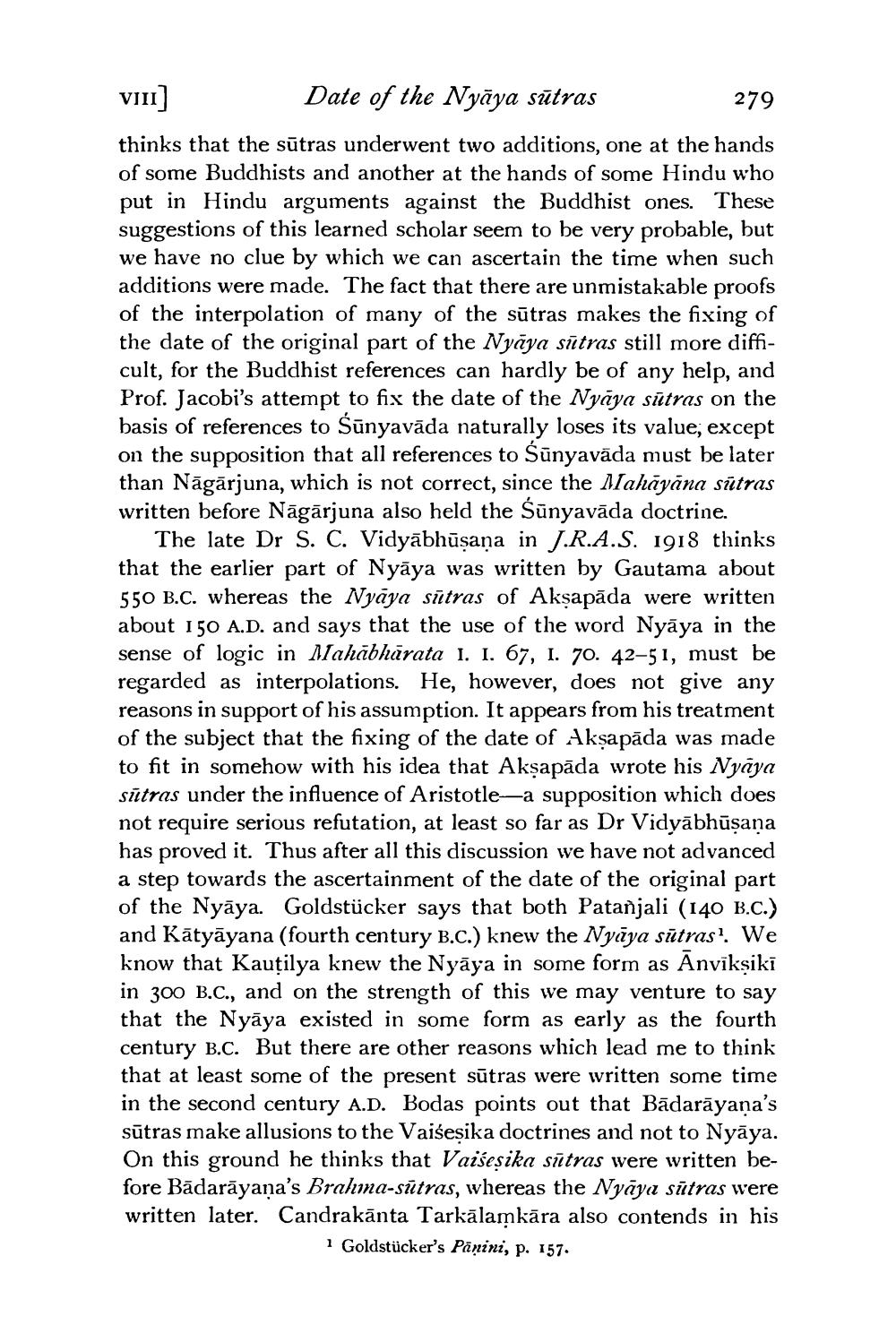________________
vill] Date of the Nyāya sūtras
279 thinks that the sūtras underwent two additions, one at the hands of some Buddhists and another at the hands of some Hindu who put in Hindu arguments against the Buddhist ones. These suggestions of this learned scholar seem to be very probable, but we have no clue by which we can ascertain the time when such additions were made. The fact that there are unmistakable proofs of the interpolation of many of the sūtras makes the fixing of the date of the original part of the Nyāya sūtras still more difficult, for the Buddhist references can hardly be of any help, and Prof. Jacobi's attempt to fix the date of the Nyāya sūtras on the basis of references to Sūnyavāda naturally loses its value, except on the supposition that all references to Sūnyavāda must be later than Nāgārjuna, which is not correct, since the Mahāyāna sūtras written before Nāgārjuna also held the Sūnyavāda doctrine.
The late Dr S. C. Vidyābhūsaņa in J.R.A.S. 1918 thinks that the earlier part of Nyāya was written by Gautama about 550 B.C. whereas the Nyāya sūtras of Akşapāda were written about 150 A.D. and says that the use of the word Nyāya in the sense of logic in Nlahābhārata I. I. 67, I. 70. 42–51, must be regarded as interpolations. He, however, does not give any reasons in support of his assumption. It appears from his treatment of the subject that the fixing of the date of Akşapāda was made to fit in somehow with his idea that Akşapāda wrote his Nyaya sitras under the influence of Aristotle a supposition which does not require serious refutation, at least so far as Dr Vidyābhūsana has proved it. Thus after all this discussion we have not advanced a step towards the ascertainment of the date of the original part of the Nyāya. Goldstücker says that both Patanjali (140 B.C.) and Kātyāyana (fourth century B.C.) knew the Nyāya sūtras? We know that Kautilya knew the Nyāya in some form as Anvīksiki in 300 B.C., and on the strength of this we may venture to say that the Nyāya existed in some form as early as the fourth century B.C. But there are other reasons which lead me to think that at least some of the present sūtras were written some time in the second century A.D. Bodas points out that Bādarāyana's sūtras make allusions to the Vaišesika doctrines and not to Nyāya. On this ground he thinks that Vaišesika sitras were written before Bādarāyana's Brahma-sūtras, whereas the Nyāya sūtras were written later. Candrakānta Tarkālamkāra also contends in his
i Goldstücker's Pāṇini, p. 157.




